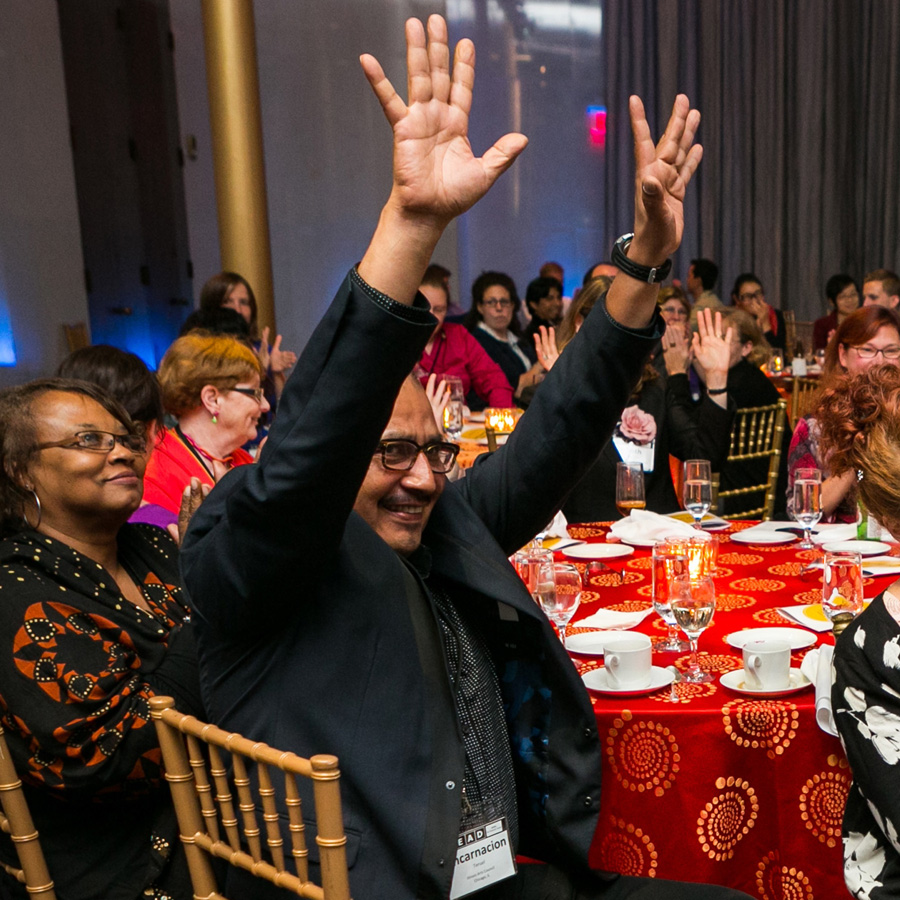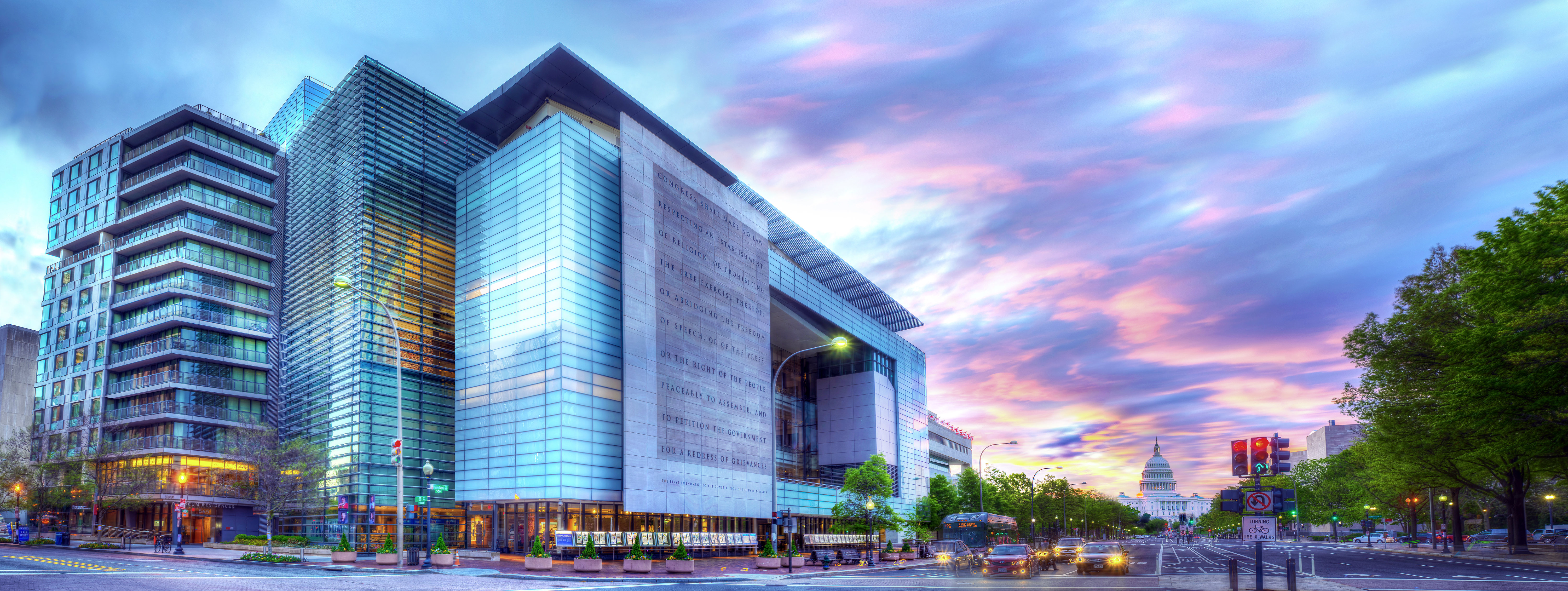ABOUT
ABOUT LEAD®
The LEAD® conference continues to be the one place where leaders and newcomers in the field of access to the cultural arts for individuals with disabilities and older adults can meet and mingle with peers, learn about the latest technological advances, get the straight talk on legal issues, and contribute to the collective knowledge base of how to reach and engage audiences, patrons, and visitors of all ages and abilities.
- Basic to Advanced: No matter what level of experience you have, there's always something to learn. The building blocks will give newcomers the tools and information they need to develop a successful accessibility program while the discussion groups and advanced track address accessibility for the most experienced.
- Facilities to Programs: Sessions and discussions will cover all aspects of accessibility from the built environment to programs and communication.
- Legal Obligations & Customer Service: Learn about relevant laws and regulations and explore accessibility from the customer service and business case perspectives.
- Networking: Engage in conversations with colleagues who are enthusiastic about accessibility and eager to share their insights and learn from others.
Please join us to continue the dynamic dialogue to share exciting ideas and explore new and innovative ways to welcome everyone through the doors of our organizations.



JOIN US!
This year's conference will take place August 2-7, 2015 at the Renaissance Arlington Capital View Hotel in Arlington, VA. Click the Register Now button below to start your registration for the 2015 Leadership Exchange in Arts and Disability annual conference!
LEAD 2015 PARTNERS
Ford's Theatre
Ford’s Theatre celebrates the legacy of President Abraham Lincoln and explores the American experience through theatre and education. A working theatre, historical monument, world-class museum and learning center, Ford’s Theatre is the premier destination in Washington, D.C., to explore and celebrate Lincoln’s ideals and leadership principles: courage, integrity, tolerance, equality and creative expression. Visit www.fordstheatre.org for more information.

The National Gallery of Art
The National Gallery of Art opened to the public in 1941, so is about to celebrate its 75th birthday next year! The permanent collections focus mainly on European and American art from the early renaissance through today, and includes substantial holdings in paintings, sculpture, and works on paper. The Gallery serves a national mission to preserve, collect, exhibition, and foster understanding of works of art in a variety of formats. The Division of Education in particular strives to create an environment that encourages audiences to have personally meaningful experiences, look carefully, think critically and take multiple perspectives, explore art as historical and cultural expression, and reflect on the creative process.

The Newseum
The Newseum’s mission is to champion the five freedoms of the First Amendment through exhibits, public programs and education. Established and supported in part by the Freedom Forum, the Newseum is a 501(c)(3) public charity funded by generous individuals, corporations and foundations.
The dynamic, engaging and interactive Newseum allows visitors to experience the stories of yesterday and today through the eyes of the media while celebrating the freedoms guaranteed to all Americans by the First Amendment.
From the modern building located on historic Pennsylvania Avenue, to the state-of-the-art theaters, exhibits and hands-on activities located inside, a visit will quickly show why TripAdvisor users rated the Newseum as a “Traveler’s Choice Top 10 Museum in the U.S.”
The Newseum also has become an important forum for debate and dialog about important issues of the day and a nonpartisan place to explore the principles on which America is built.
Standing between the U.S. Capitol and the White House on Pennsylvania Avenue and featuring dramatic vistas of Washington, D.C., the Newseum has become one of the most sought-after venues in the area for conferences, weddings, movie premieres and special events. And with multiple state-of-the-art studios in house, programs of all kinds are broadcast around the world from the Newseum each week.

Shaespeare Theatre Company
Recipient of the 2012 Regional Theatre Tony Award®, the Shakespeare Theatre Company (STC) has become one of the nation’s leading theatre companies, synonymous with artistic excellence and making classical theatre more accessible.
Under the leadership of Artistic Director Michael Kahn and Managing Director Chris Jennings, STC’s innovative approach to Shakespeare and other classic playwrights has earned it the reputation as the nation’s premier classical theatre company. By focusing on works with profound themes, complex characters, and poetic language written by Shakespeare, his contemporaries and playwrights he influenced, the Company’s artistic mission is unique among theatre companies: to present theatre of scope and size in an imaginative, skillful, and accessible American style that honors the playwrights’ language and intentions while viewing their work through a 21st-century lens.
A leader in arts education, STC has a stable of initiatives that teach and excite learners of all ages, from school programs and acting classes to discussion series and accessible programs like the annual Free For All, one of STC’s most beloved annual events, allowing audiences to experience Shakespeare at no charge.
STC performs in two theatres, the 451-seat Lansburgh Theatre and the 774-seat Sidney Harman Hall in downtown Washington, D.C., creating a dynamic, cultural hub of activity that showcases STC as well as outstanding local performing arts groups and nationally renowned organizations.
Smithsonian Institution Accessibility Program
The mission of the Smithsonian Institution Accessibility Program is to succeed in making all visitors feel welcome by providing consistent, effortless access to the Institution’s programs, collections, and facilities. The Accessibility Program is founded on the belief that all Smithsonian visitors and staff are valued, and that access should be universal, integrated, independent, and dignified. No matter who they are, visitors should be able to experience, learn from, and enjoy all the Smithsonian offers.
For more than 30 years, the Smithsonian Institution has remained committed to this mission and, in so doing, systematically addresses issues of architectural and programmatic accessibility for visitors and staff with disabilities. The Accessibility Program was established in 1991 with a mission to serve the Smithsonian, its staff, and visitors by guiding and focusing the efforts of the Institution’s 19 museums and the National Zoo to fully include people with disabilities. The Smithsonian museums and offices work collaboratively with the Accessibility Program to improve access to existing resources and to design each new exhibition, building, and program to ensure it is accessible.





